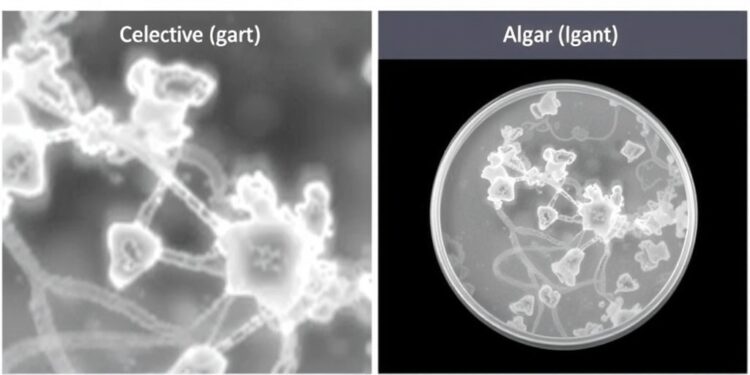In a groundbreaking study carried out by researchers at Osaka Metropolitan University, a novel selective differential medium targeting the pathogenic bacterium Escherichia albertii has been developed. E. albertii, a member of the Enterobacterales order, is frequently linked to foodborne illnesses, making its identification in food samples crucial. The researchers aimed to refine the methods for isolating this bacterium from contaminated sources, specifically through the enhancement of selective culture media.
The study highlights the background on E. albertii and its growth characteristics when subjected to various inhibitors. Previous investigations had identified cefixime and tellurite as effective agents for suppressing a broad spectrum of bacteria within the Enterobacterales family. In laboratory tests, the research team found that while cefixime and tellurite successfully inhibited E. albertii growth in Luria Bertani broth, they had a less pronounced effect in tryptic soy broth (TSB). This prompted further exploration into the composition of TSB, specifically focusing on factors that may bolster E. albertii growth even in the presence of these inhibitors.
Further experimentation involved analyzing the influence of individual components found in TSB. The researchers systematically evaluated how deprivation of tryptone, soy peptone, glucose, or phosphate affected the growth of E. albertii on tryptic soy agar plates. The findings clearly indicated that deficiencies in phosphate, soy peptone, and glucose severely impeded the growth of E. albertii. However, intriguingly, these essential components were not present in the xylose-rhamnose-melibiose (XRM)-MacConkey agar formulation, offering a clue as to why standard media might fail to adequately support the growth of E. albertii.
With the insights gleaned from these experiments, the researchers crafted a novel medium named CT-PS-XR-MacConkey. This medium incorporates cefixime, tellurite, phosphate, and soy peptone, allowing for the differentiation of E. albertii, which appears colorless on this medium, from E. coli, which exhibits a distinct red coloration. The selection of components was meticulously considered to create an optimal environment specifically tailored for isolating E. albertii from food samples without interference from other microorganisms often present in such samples.
The effectiveness of the newly formulated CT-PS-XR-MacConkey agar was rigorously tested against a diverse collection of 156 bacterial strains. Among these, a total of 65 E. albertii strains thrived, manifesting as colorless colonies. In contrast, 54 strains from nine different genera, constituting 19 varying species, demonstrated an inability to grow on this selective medium. The remainder of the bacterial isolates either grew as colorless or red colonies, showcasing the specificity of the CT-PS-XR-MacConkey medium for identifying E. albertii.
In addition to laboratory-based assessments, spiking experiments were conducted with chicken meat samples to further test the medium’s selectivity in real-world conditions. The CT-PS-XR-MacConkey medium demonstrated superior selectivity for E. albertii compared to the previously established XRM-MacConkey agar. This suggests not only the medium’s potential for accurate isolation but also its applicability in food safety and public health.
The implications of this research are significant, particularly in the context of food safety. As E. albertii continues to be linked to sporadic gastrointestinal infections, the development of reliable detection methods becomes paramount. The CT-PS-XR-MacConkey medium represents a crucial advancement in the toolkit available for microbiologists and food safety inspectors. By facilitating the rapid identification of this pathogen, the medium promises to enhance our understanding of its epidemiology and aid in the prevention of foodborne outbreaks.
Moreover, the research opens avenues for future studies targeting other pathogenic bacteria utilizing similar selective media designs. As pathogenic strains evolve, the methodologies employed in microbiology must also adapt to ensure they remain effective against emerging threats in the food supply chain. This study underscores the importance of innovative approaches in food microbiology, where new selective media can significantly impact public health outcomes.
In conclusion, the development of the CT-PS-XR-MacConkey medium marks a pivotal milestone in the selective culture of Escherichia albertii. With its demonstrated efficacy and enhanced selectivity, this medium is set to play a vital role in the ongoing fight against foodborne illnesses. Researchers continue to explore ways to refine these techniques further, aiming to stay ahead of pathogenic challenges that threaten food safety and, by extension, public health.
The research not only highlights the importance of understanding bacterial behavior in various environments but also illustrates the collaborative effort within the scientific community to identify and mitigate health risks associated with food consumption. As examinations for foodborne pathogens enhance in rigour and precision, the ultimate goal remains to safeguard public health through effective microbiological practices and innovations.
Subject of Research: Development of a novel selective medium for Escherichia albertii
Article Title: Development of a novel modified selective medium cefixime–tellurite-phosphate-xylose-rhamnose MacConkey agar for isolation of Escherichia albertii and its evaluation with food samples
News Publication Date: 5-Jan-2025
Web References: https://www.omu.ac.jp/en/
References: Link to the DOI
Image Credits: Not available.
Keywords: Escherichia albertii, selective differential medium, foodborne pathogen, cefixime, tellurite, tryptic soy broth, food safety, microbiology, pathogen isolation, food samples, public health, experimental evaluation.




